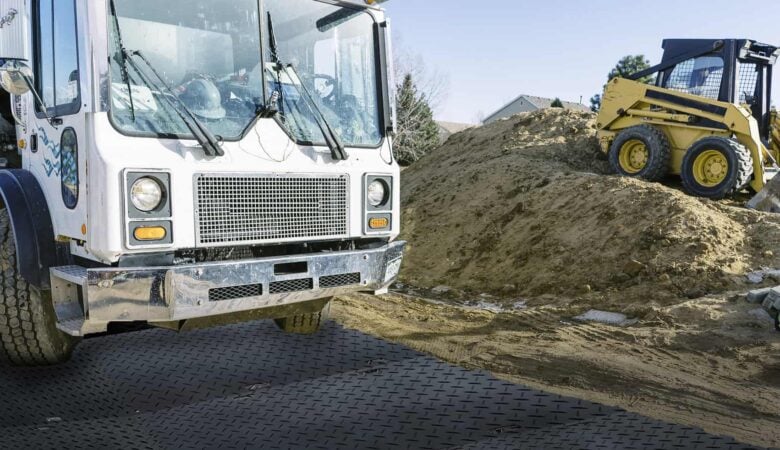There are times when forklifts, pallets, and loading ramps are not sufficient for moving cargo around. That’s when you need slings and shackles. Lifting a load with slings and shackles also involves some sort of boom, be it from a boom truck or crane. Needless to say that there are a whole host of safety considerations when engaging in this sort of lifting operation.
The Occupational Safety and Health Administration (OSHA) has issued its own guidelines dealing with safe lifting practices. They mention a number of very specific things having to do with slings and shackles. For the benefit of our readers, we have summarized OSHA guidelines below. You can go to the OSHA website and search ‘safe lifting practices’ for more details.

Choosing the Right Kind of Sling
OSHA’s guidance begins with a discussion about choosing the right kind of sling. They discuss slings made from chain, wire rope, fiber rope, and synthetic webbing. The needs of most of our customers are sufficiently met with webbing slings. However, it is always important to assess each load before choosing the right sling for the lift.
OSHA recommends synthetic web slings when practical due to their strength, convenience, shock absorbency, temperature resistance, and safety. Synthetic webbing slings should be used with caution when dealing with acids and other corrosive substances. They should never be used when they show signs of excessive wear, elongation, or distortion.
The Four Points of Safe Lifting
The OSHA guidance goes on to discuss how to lift safely using four points of reference. Those four points are as follows:
1. Size, Weight, and Center of Gravity
The safest way to lift with a sling is to ensure that the hook is located directly over the center of gravity. Slight variations are workable but getting too far off center can cause big problems. The heavier the weight and the larger the size, the more critical center of gravity is.
2. Lift Angle and Number of Legs
A lift angle is formed between each sling leg and its horizontal line. The smaller that angle is, the more stress is put on the sling legs. It is important to know this angle in relation to the amount of weight being lifted. Smaller angles dictate less weight per lift. Larger angles can tolerate heavier loads.
3. Sling Load Limit
Just like webbing straps and chains used to tie down cargo, slings have working load limits. Each sling has a rated capacity calculated by considering the type and size of the sling and the type of hook being used. It is critical that operators know the rated capacity of their slings before attempting a lift. Manufacturers generally mark slings at the factory.
4. Usage, Care, and Handling
OSHA’s fourth point of reference for safe lifting involves the proper usage, care, and handling of slings and shackles. Their guidance suggests that a history of improper usage increases the risk of accidents with every subsequent lift. In simple terms, bad habits are hard to break.
For each lift, proper care and handling of slings is essential. Slings should be cared for to prevent even minor damage. They should be inspected prior to and following every lift. And they should always be used according to manufacturer instructions and OSHA guidelines.
Conclusion:
This concludes our basic summary of OSHA guidelines for safe lifting with slings and shackles. If you ever have a question about safe lifting practices, find the answer before you attempt a lift. Remember that lifting with slings and shackles is always dangerous no matter how many safety precautions you take.














